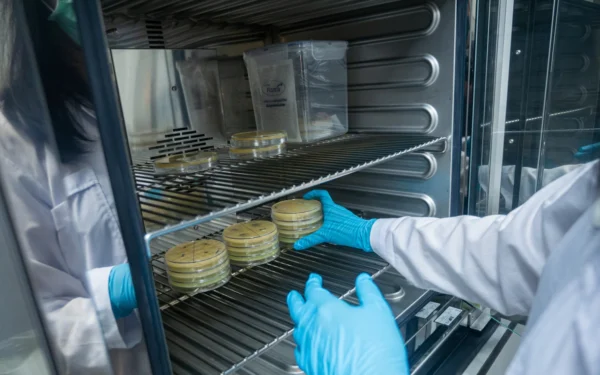To meet the growing demand for more targeted and effective therapeutics, biopharmaceutical companies are increasingly turning to single-cell sequencing for the high-resolution insights it offers into cellular and molecular biology. With the help of single-cell sequencing, scientists can probe deeper into cellular behavior to characterize the biology of immune response, tissue heterogeneity, and tumor evolution. For scientific teams working on drug discovery, disease modeling, or translational research programs, such molecular resolution can unlock faster paths to disease-relevant therapeutic development, particularly when targeting complex diseases like cancer.
However, the promise of single-cell sequencing workflows is often limited by fragmented operations, manual bottlenecks, and the overwhelming volume of data generated. While some labs have made headway by digitizing aspects of their workflows, many still rely on disconnected tools that limit reproducibility and scalability. To maximize the value of data generated from next-generation sequencing (NGS) pipelines, scientific teams must develop integrated, traceable, and automation-ready workflows.
This article explores key strategies for sample collection, library preparation, and data analysis throughout the single-cell sequencing lifecycle, enabling you to generate high-quality, biologically interpretable data while scaling efficiently.
Preserve sample quality from the start
The reliability of a single-cell sequencing run begins with securing high-quality samples that contain viable and biologically representative cell populations. Maintaining viability at or above 90% is essential and depends on careful sample handling, tissue-specific dissociation protocols, and tightly controlled transport conditions.
To preserve cell integrity, use optimized dissociation protocols tailored to the tissue type. This minimizes stress and protects fragile or rare cell types from mechanical or enzymatic damage. Maintain cold chain logistics during all handoffs and track cell viability in real time using tools such as flow cytometry or automated, image-based cell counters.
Additionally, optimize cell isolation methods based on your study’s needs:
- Fluorescence-assisted cell sorting (FACS) and magnetic-activated cell sorting (MACS) enable the targeted selection of cells. However, they require careful optimization to prevent biased isolations and the loss of rare populations of cells.
- Microwell- and droplet-based systems offer higher throughput at scale, but they require monitoring to minimize droplet coalescence.
- In situ hybridization provides spatial context for characterizing gene expression in single-cell populations, but with limited throughput.
- Capillary sampling enables more precise cell extraction, but it’s challenging to implement for large-scale applications.
Rather than defaulting to a single method, select your isolation strategy based on the specific requirements of your study, balancing throughput, biological context, and the robustness of your data analysis pipeline.
Design for reproducibility via multiplexing, monitoring, and documentation
Technical consistency is critical for extracting reproducible insights from single-cell sequencing data. A key strategy to reduce batch effects while improving efficiency is sample multiplexing. By assigning unique molecular barcodes to each sample or cell during library preparation, researchers can process multiple samples in a single sequencing run. This approach facilitates accurate demultiplexing, reduces variability, lowers per-sample cost, and increases throughput.
To safeguard data quality, integrate quality control (QC) checkpoints throughout the workflow, particularly after tissue dissociation, during or after cell isolation, and before library preparation. At each stage, monitor key metrics, such as cell count, viability, and RNA integrity. Automated instruments such as cell counters, when paired with electronic lab notebooks (ELNs), can flag problematic samples in real time; for example, those with low viability or degraded RNA.
Robust documentation and traceability also play a vital role. Version-controlled ELNs can log protocol parameters, deviations, and instrument settings, enabling teams to identify procedural shifts that may affect sequencing outcomes. This level of transparency is especially valuable in regulated environments or multi-site studies, where even minor inconsistencies can compromise the integrity of single-cell data.
Check for quality and integrity throughout library preparation
Library preparation is a pivotal stage in single-cell sequencing, where platform or protocol choices can directly influence data quality. Using an approach that lacks sensitivity, capture efficiency, or compatibility with your sequencing system can introduce variability that distorts downstream analysis. To mitigate this risk, teams must carefully balance throughput goals with per-cell sensitivity requirements while ensuring the workflow remains compatible with their broader informatics infrastructure.
Before initiating single-cell RNA sequencing (scRNA-seq), verify RNA integrity, as degraded samples can result in biased transcript representation and reduced library complexity. Throughout the library prep process, include quality control measures such as contamination screening, RNA (or cDNA) quantification, and fragment analysis to ensure consistent input, preserve low-abundance transcripts, and minimize amplification biases. These safeguards support the generation of accurate gene expression profiles and enable reproducible interpretation of downstream results.
Automation and workflow orchestration
Automating steps within single-cell sequencing workflows improves efficiency, supports reproducibility, and facilitates scalability. For instance, integrating multiple sequencers in a lab with a laboratory information management system (LIMS) automates data tracking, retrieval, and analysis. This is particularly valuable when benchtop sequencers are connected to a LIMS, enabling faster result delivery in smaller-scale, early-stage research initiatives, such as target identification and validation. Likewise, integrating liquid handlers with ELNs enables automated protocol execution based on predefined experimental designs, along with real-time logging of key parameters, such as reagent volumes, sample temperature, and plate mapping. This enhances process visibility, supports quicker anomaly detection, and improves the efficiency of large-scale sequencing workflows.
These types of integrations also allow you to:
- Automatically flag failed libraries and sequencing runs
- Standardize protocol versioning and instrument setup across sites
- Log reagent usage, consumables, and sequencing metrics
- Enforce SOPs and compliance requirements
- Enable real-time QC analytics and process monitoring
These system integrations help reduce human error, enforce process consistency, and provide a single source of truth. This foundation is essential for reproducible science, especially as projects scale from small pilot runs in research labs to large-scale production workflows in dedicated genomics facilities.
Monitor QC in real time and centralize data access
Modern sequencers now provide real-time visibility into QC metrics, such as barcode collisions, biased coverage, read duplication, or low cluster density. By integrating these insights into dashboards, teams can identify problems proactively rather than reactively, after downstream analysis fails.
Secure, centralized data transfer, whether through LIMS, cloud-based platforms, or direct instrument integrations, ensures raw reads are immediately available for processing. This reduces delays, eliminates fragmented file storage, and enables faster decision making. Such data harmonization is especially critical for Contract Research Organization (CRO) partnerships or multi-site studies, where quick data access and standardization are essential for maintaining project momentum.
Build an infrastructure for scalable data interpretation
As single-cell sequencing datasets scale to millions of cells, a robust computational infrastructure becomes essential. To prevent data fragmentation and ensure analytical consistency, establish standardized, well-documented, and modular workflows that guide each dataset from raw reads to biologically meaningful, actionable insights.
Using workflow managers like Nextflow, you can define discrete, reusable workflow modules that can be version-controlled and composed into standardized, end-to-end data processing pipelines. Similarly, Snakemake enables a rule-based, modular workflow design, where each analysis step is defined as a self-contained rule with explicit inputs, outputs, and dependencies, thereby supporting reproducible and scalable single-cell sequencing workflows.
Start by implementing shared protocols for data processing (e.g., alignment, quantification, filtering), analysis (e.g., clustering, dimensionality reduction), and interpretation. Codifying these steps within workflow managers can help minimize analysis drift, accelerate onboarding for new team members, and enable consistent comparisons across time points, conditions, and studies as your R&D pipeline scales. In high-velocity therapeutic programs, this structure allows teams to move quickly without compromising the reliability or interpretability of results.
Leverage orthogonal data to unlock deeper insights
Before biological interpretation can begin, raw single-cell data must undergo rigorous preprocessing. This includes removing dead cells and doublets, filtering out low-quality genes or poorly expressed genes, and applying normalization techniques that preserve true biological variation. Once the dataset is cleaned and normalized, clustering algorithms can be used to identify distinct cell types or states. However, the real value lies in interpreting these clusters using reference databases, curated gene markers, and domain expertise to annotate cell populations accurately.
To gain a more holistic view, consider integrating single-cell data with complementary datasets such as bulk RNA-seq, proteomics, or spatial transcriptomics. These orthogonal data layers can help validate clustering results, uncover new biological relationships, and provide richer context for understanding cellular function and disease mechanisms.
How can research labs optimize end-to-end single-cell sequencing workflows?
Leading laboratories are adopting informatics platforms to automate critical components of the single-cell sequencing workflow, from sample tracking and library preparation to data analysis and interpretation. Centralized next-generation sequencing analysis software consolidates raw and processed sequencing data into a single, accessible repository, allowing scientific teams to access and manage data seamlessly across platforms, collaborators, and geographies.
This high level of integration streamlines operations while directly connecting analytical outputs to drug targets, biological pathways, and publicly available datasets. In doing so, it transforms single-cell data from static output into a dynamic engine for discovery, accelerating the transition from raw reads to actionable hypotheses.





